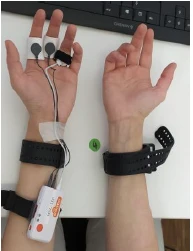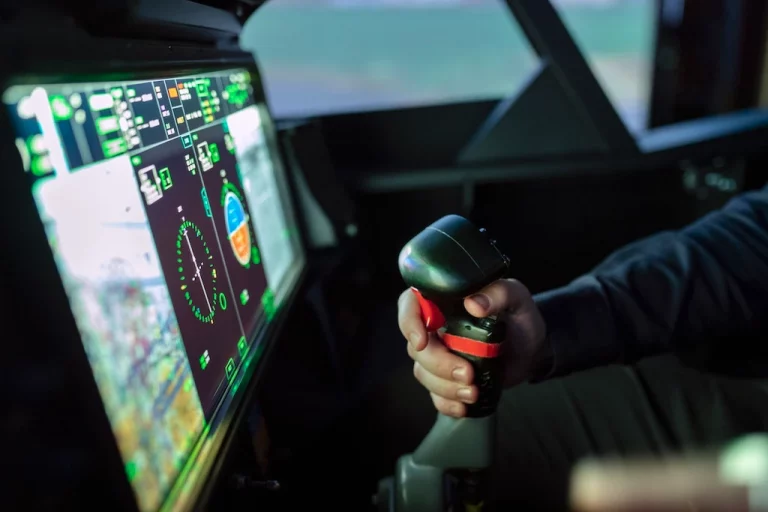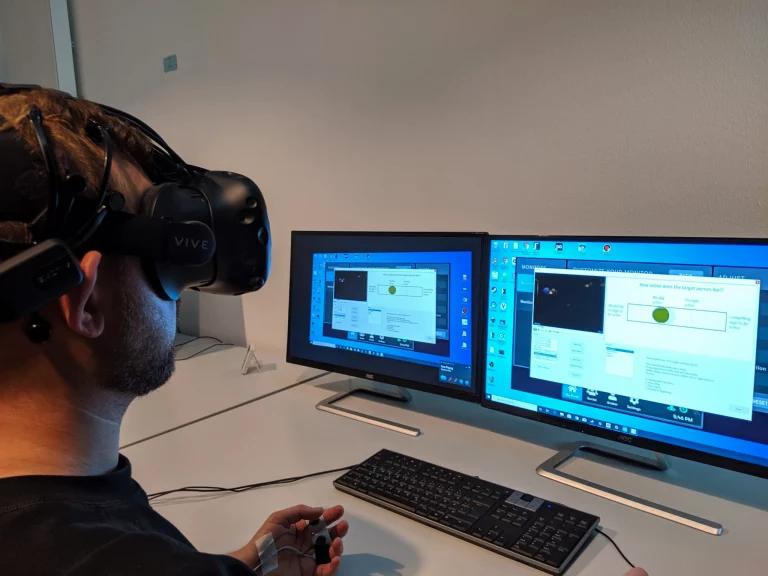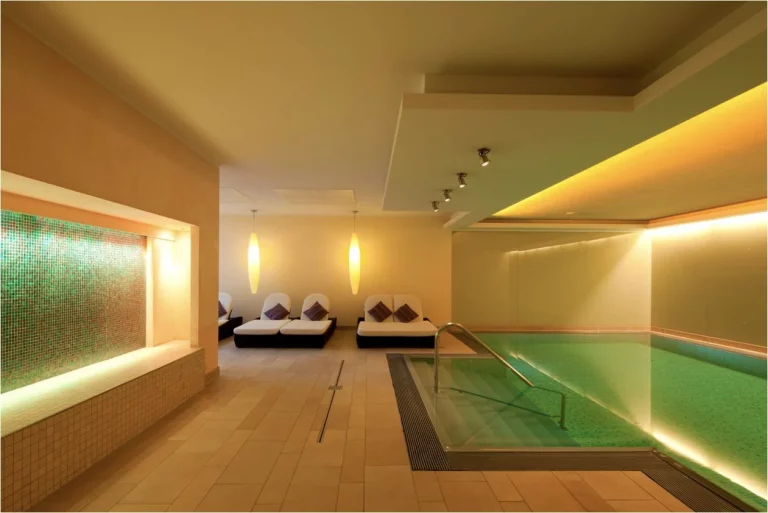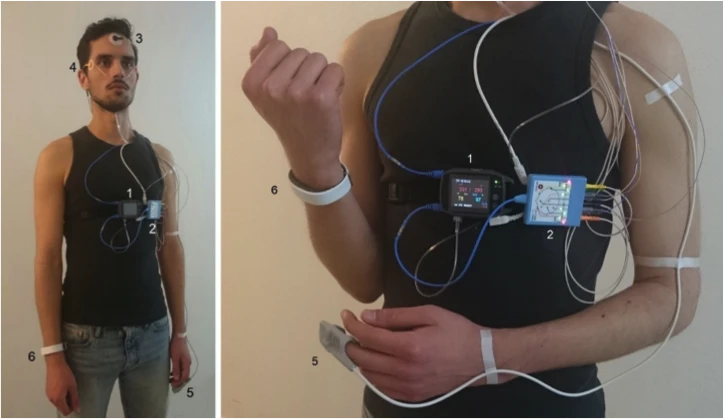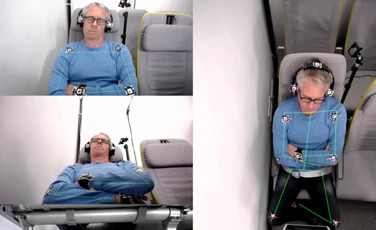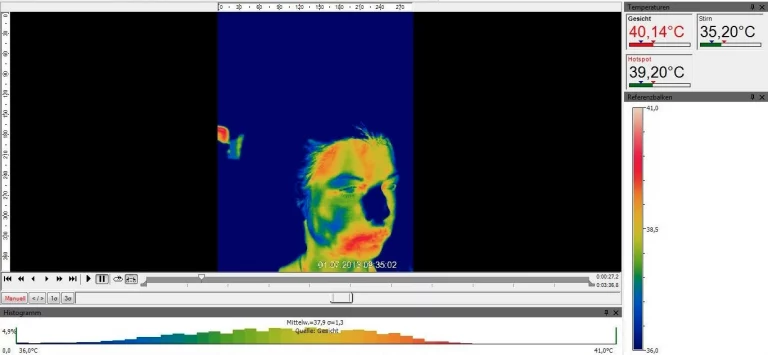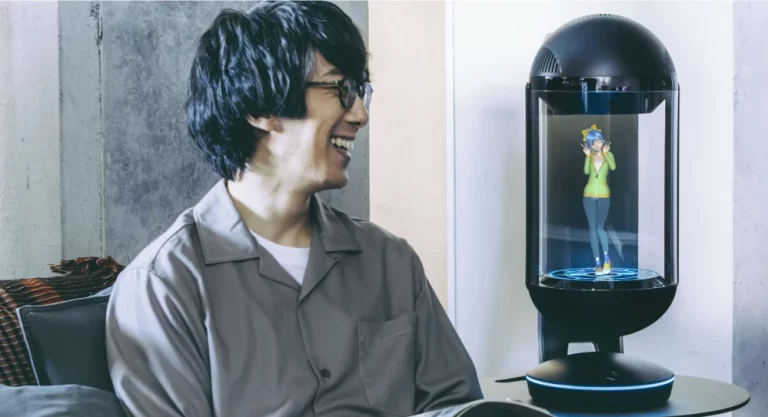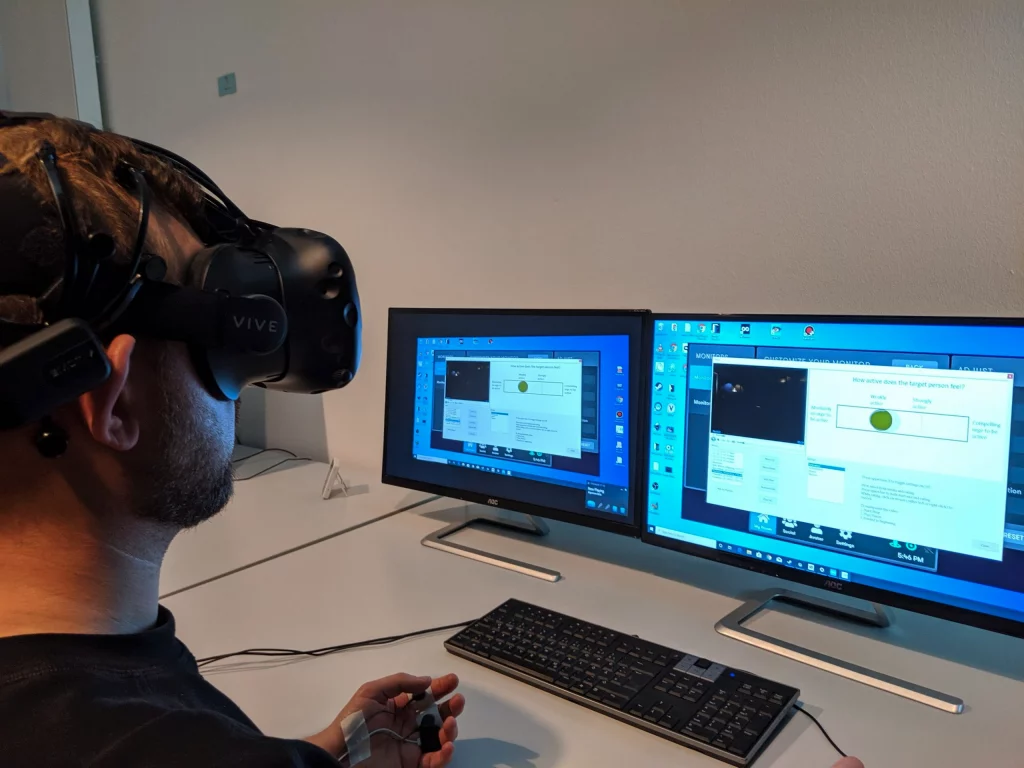
Virtual Reality-Based Support of Unipolar Depression
Project Justification
The Trier Social Stress Test (TSST) is a widely used standardized protocol that simulates a job interview to reliably induce high stress levels in laboratory settings. Despite its effectiveness, the TSST has several limitations: it induces stress in a specific social context, shows considerable interindividual variability, and requires significant personnel resources for administration.
To address these challenges, this study examined whether highly immersive virtual reality (VR) environments can elicit comparable or even greater intrapersonal stress responses in a more resource-efficient manner. Both methods were evaluated and compared using objective psychological and physiological measures to assess their effectiveness in stress induction.
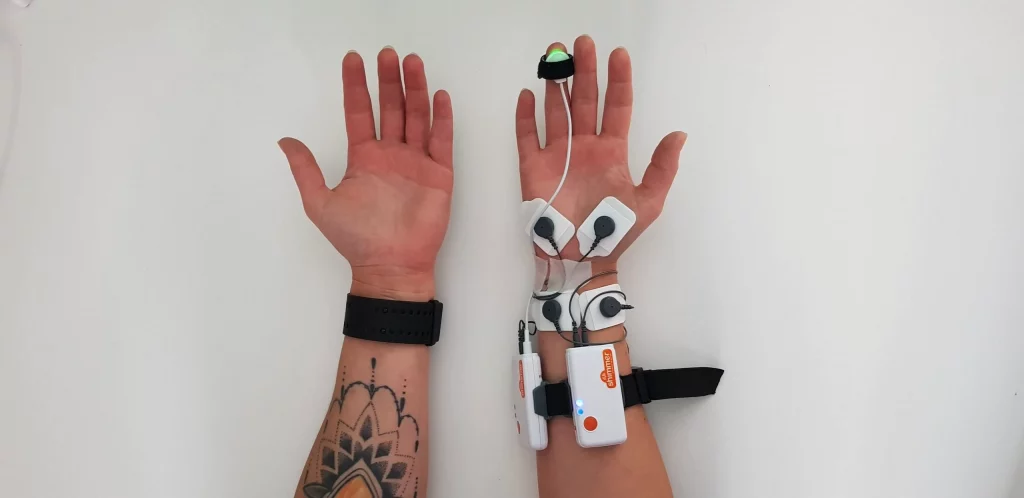
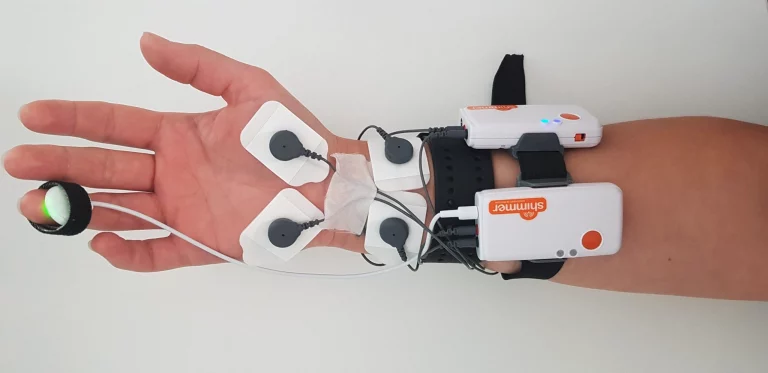
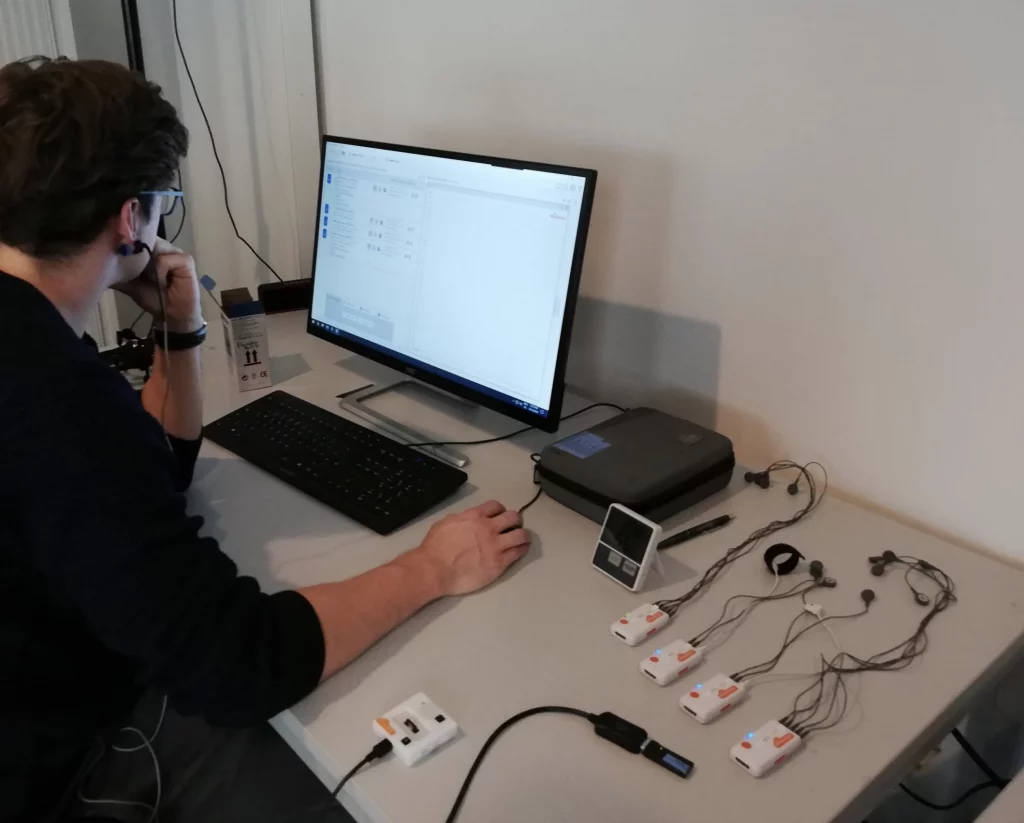
Device setup during the experiment (right). Mounting of the instruments EEG, EDA, PPG measuring pulse wave, skin conductance and heart rate of the participants (left).
Our Approach
Participants’ affective states were experimentally modulated through specially designed tasks while psychophysiological responses were continuously recorded. A sample of 60 adults underwent data collection during two distinct stress-inducing conditions: playing a commercially available virtual reality (VR) horror game and participating in the Trier Social Stress Test (TSST).
Throughout these tasks, multiple physiological signals were captured, including electrodermal activity (EDA), electrocardiography (ECG), photoplethysmography (PPG), and electroencephalography (EEG). In addition, salivary cortisol concentrations were measured before and after the TSST to serve as neuroendocrinological markers reflecting individual stress responses.
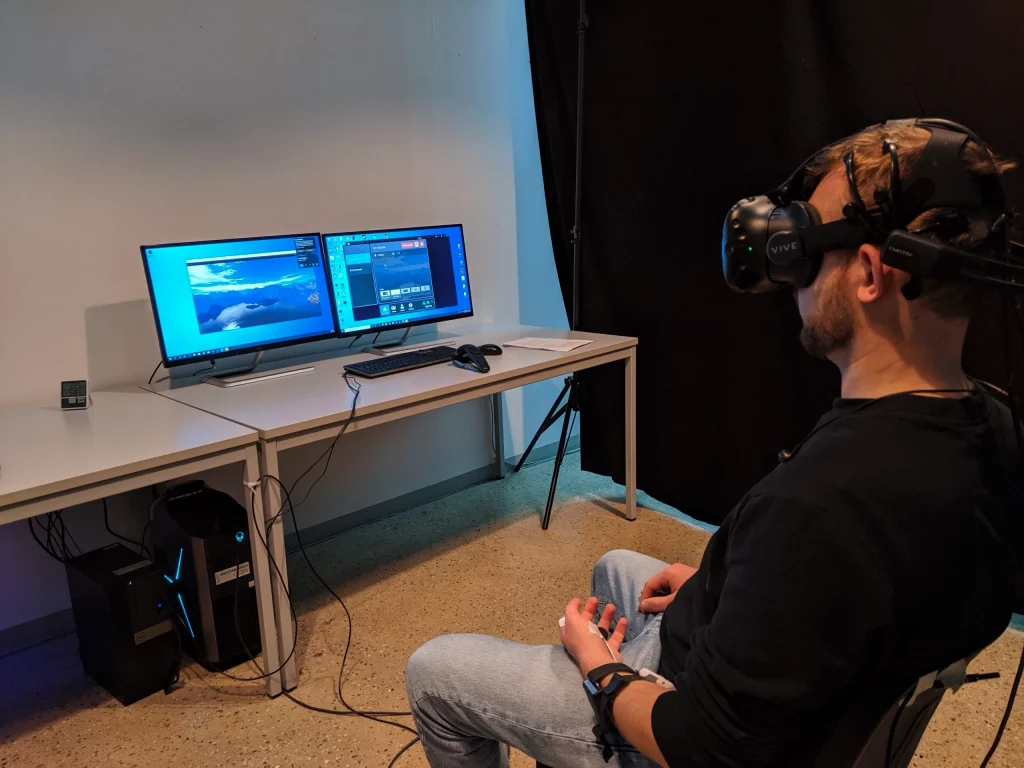
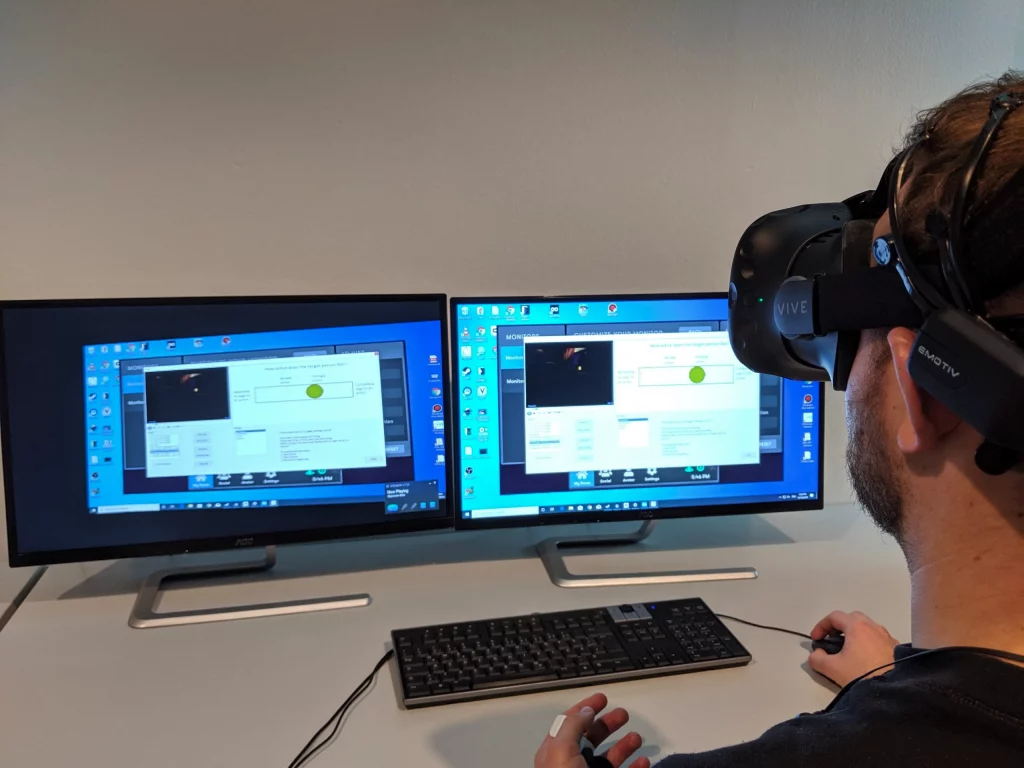

Participants during session 1 (VR-games) and session 2 (TSST)
Insights and Outcomes
The manipulation of affective states elicited measurable changes across multiple physiological parameters, including skin conductivity, blood flow, and heart rate. Neuroendocrinological assessments confirmed that the Trier Social Stress Test (TSST) effectively induced the intended stress response.
The use of diverse settings and affective tasks enhances the generalizability of these findings across a broad spectrum of emotional states. These results highlight the potential of virtual reality (VR) applications as easily deployable tools for emotion and stress induction in experimental contexts, as well as for the development of stress management interventions.
Furthermore, the extensive dataset collected provides a robust empirical foundation for testing various hypotheses and drawing scientifically valid conclusions about the relationships between physiological signals and affective experiences.
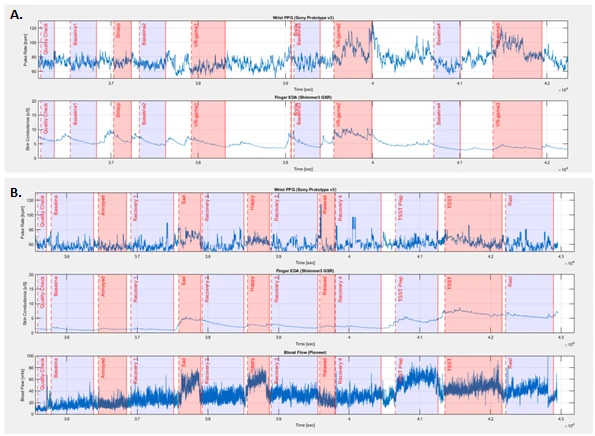
(A) Exemplary PPG and EDA measurements recorded in session 1 (VR-games). (B) Exemplary PPG, EDA, and blood flow measurements recorded in session 2 (TSST). Visualizations of the physiological data indicate intra-individual task-specific changes in physiological markers and confirm that the manipulation of physiological states with various tasks was successfull in both experimental sessions, e.g., increases in skin counductance (EDA) and heart rate during VR horror game as well as during TSST.
Fear and distress induction. ECG with real-time heartrate extraction and skin conductance response during VR horror-game.
Related Projects
Psychophysiological data collection (EEG, EDA, ECG)
A predictive modelling techniques and pattern recognition-based approach
Long-term psychoneuro-endocrinologic evaluation of a chronobiologically adapted light system
Evaluation of multiple fatigue intervention systems
Multimodal physiological measurements of mental workload for evaluating ADAS
Developing of emphatic dialog systems: an EU-Japanese collaboration

